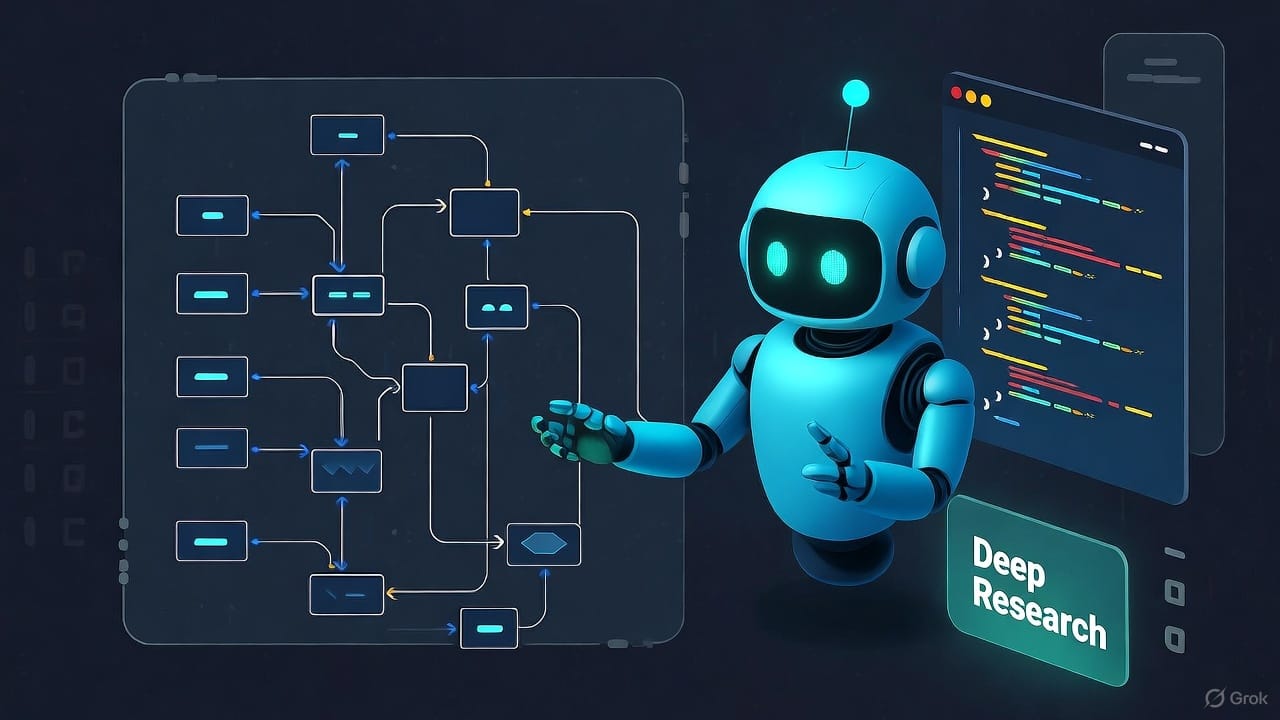Accelerating Vulnerability Research with DeepWiki: Turning GitHub Chaos into Actionable Insights

Hey there, fellow security enthusiasts! If you've ever stared at a sprawling GitHub repository wondering where the low-hanging fruit vulnerabilities hide, you're not alone. Vulnerability research (VR) often feels like spelunking in a cave with a flickering flashlight—tedious navigation through undocumented code, tangled dependencies, and cryptic commit histories. But what if you had an AI sidekick that could map the cave, highlight the weak spots, and even chat with you about potential exploits? Enter DeepWiki.com, the free AI-powered documentation tool that's revolutionizing how we dissect open-source projects for security flaws.
In this post, I'll walk you through how DeepWiki supercharges VR workflows, share real-world examples, and provide a step-by-step guide to get you started. Whether you're hunting CVEs, auditing third-party libs, or just sharpening your skills, this tool could cut your recon time in half. Let's dive in.
What is DeepWiki and Why Should Vuln Researchers Care?
DeepWiki, built by Cognition Labs (the folks behind the AI dev agent Devin), is essentially "Deep Research for GitHub." It's a free service that auto-generates interactive, wiki-style documentation for any public GitHub repo—just swap "github.com" with "deepwiki.com" in the URL (e.g., deepwiki.com/facebook/react instead of github.com/facebook/react). No setup, no costs, no limits on public repos.
Under the hood, it leverages advanced AI (powered by their DeepResearch agent) to analyze billions of lines of code, producing:
- Project summaries: High-level overviews of purpose, tech stack, and core functionality.
- Architecture diagrams: Visual maps of modules, dependencies, and data flows.
- File explorers: Annotated breakdowns of key files with code snippets and explanations.
- Conversational Q&A: Ask natural-language questions like "How does this handle user input?" and get grounded, context-aware answers.
- Deep Research mode: For complex queries, it runs multi-turn investigations (up to 5 iterations) to uncover nuances.
For VR, this is gold. Traditional tools like grep, static analyzers (e.g., Semgrep), or even Ghidra shine on isolated files, but they falter on holistic understanding. DeepWiki bridges that gap by making comprehension effortless, letting you focus on exploitation. It's already indexed 50,000+ top repos, analyzing 4B+ lines of code with $300K+ in compute power—scale that's hard to beat at zero cost.
How DeepWiki Fits into Vulnerability Research Workflows
VR typically breaks into phases: reconnaissance, analysis, exploitation, and reporting. DeepWiki excels in recon and analysis, accelerating threat modeling and vuln hunting. Here's how it slots in:
| Phase | Traditional Pain Points | DeepWiki's Superpower | VR Benefit |
|---|---|---|---|
| Recon | Manual README skimming, dependency tracing | Auto-summaries + dependency graphs | Spot high-risk areas (e.g., unpatched libs) in minutes |
| Analysis | Code diving without context | Annotated explorers + diagrams | Identify input sinks, auth flows, or crypto mishaps |
| Exploitation | Hypothetical "what if" testing | Q&A for edge cases + Deep Research | Prototype exploits via guided queries (e.g., "Simulate SQLi here?") |
| Reporting | Screenshots and verbose notes | Exportable docs + visuals | Crisp, shareable evidence for disclosures |
It's not a replacement for tools like Burp Suite or ZAP—think of it as the smart map before you deploy the drones.
Step-by-Step: Integrating DeepWiki into Your VR Workflow
Ready to level up? Here's a no-fluff guide:
-
Pick Your Target: Choose a public GitHub repo (e.g., a suspected vulnerable lib like an old Log4j fork).
-
Access the Wiki: Navigate to
deepwiki.com/[owner]/[repo]. If it's not indexed (rare for popular ones), submit it via the site's "Add Repo" button—processes in minutes. -
Recon Quick-Scan:
- Skim the summary for tech stack red flags (e.g., outdated deps).
- Browse diagrams for trust boundaries or data flows—look for unvalidated inputs.
-
Deep Dive with Q&A:
- Ask targeted questions: "What are potential buffer overflow points in this module?" or "Does this use secure crypto primitives?"
- Enable Deep Research for thorny issues—it'll plan, iterate, and conclude with evidence.
-
Export & Test:
- Grab diagrams/summaries for your notes.
- Pair with tools: Run Semgrep on flagged files, or fuzz inputs from Q&A suggestions.
-
Iterate & Report: Re-query as you patch/exploit. Share DeepWiki links in your bug reports—they're self-updating!
Potential Drawbacks and Tips
DeepWiki isn't perfect—it's AI, so occasional hallucinations sneak in (always verify with source code). It only works on public repos, and complex queries can take a couple of minutes.
Wrapping Up: Your New VR Swiss Army Knife
DeepWiki isn't just a doc generator—it's a force multiplier for vuln hunters, turning opaque codebases into transparent targets. In my own hunts, it's shaved days off audits and sparked ideas I would've missed. Give it a spin on a repo you're eyeing, and drop a comment if you uncover something juicy.
What's your go-to VR tool? Have you tried DeepWiki yet? Hit me up on X or the comments—let's geek out over exploits.

